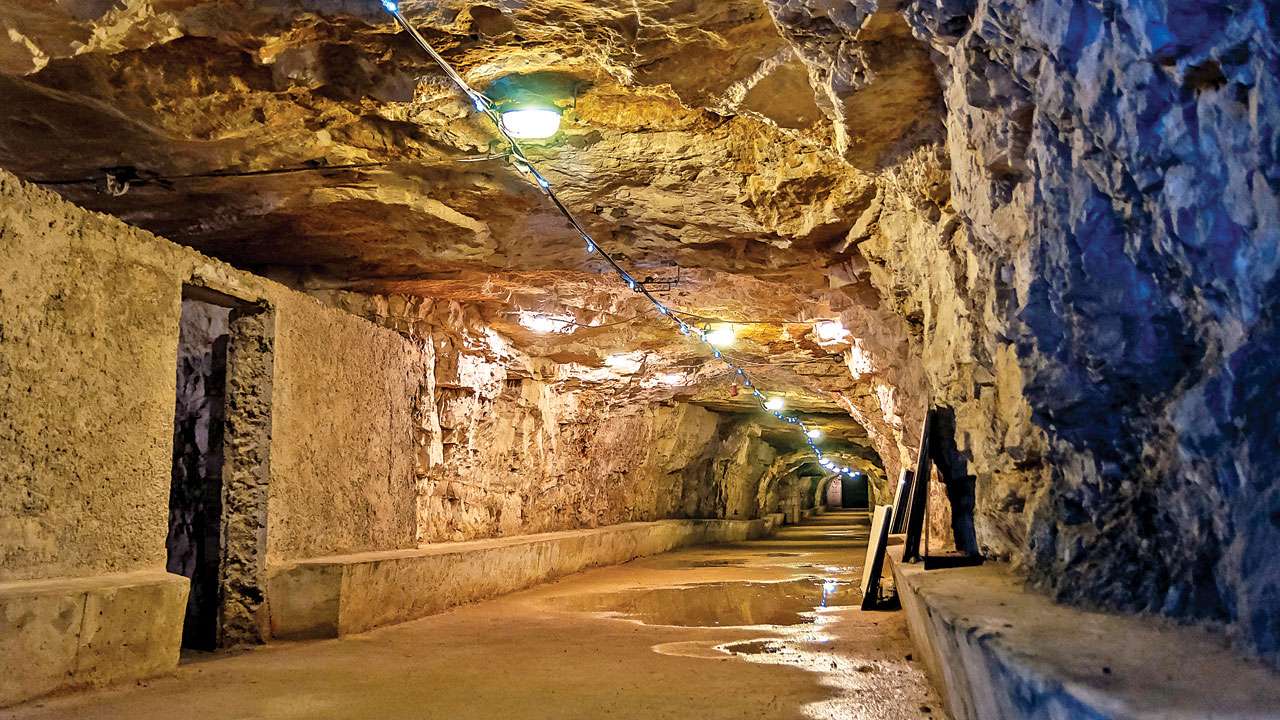
As archaeo-metallurgists working in the seemingly remote areas of Aravalli Hills, our objective was to establish the technology and dates of the extractive metallurgy employed in the ancient remains at the three principle mines of Zawar, Dariba and Agucha in Rajasthan.
Through three millennia, these sites produced four metals (silver, copper, lead and zinc) by very different processes on a massive scale.
Our project began in the 1980s and our team members were drawn from Hindustan Zinc Ltd, the British Museum, the M S University of Baroda, and the Peak District Mining Museum, Derbyshire. (Read: DNA Opinion 29-3-2019).
We were aware that most studies of ancient technology were based on the Egyptian, Greek and Roman civilisations. Now, for the first time, we had the opportunity to, literally and metaphorically, dig deeper into the ancient mines of Mewar, Rajasthan and study long-term development of the major industry, far away from the Graeco-Roman world. Going beyond the Eurocentric worldview was certainly one of our objectives. We wanted to expand the study of industrial technology innovation.
The development of the zinc distillation process at Zawar near Udaipur was evidence of large-scale production during the first millennium AD.
The mines at Zawar would always have been under the control of the ruling authority. Clearly here, the rulers (the Ranas of Mewar in the 12th and 13th CE) were encouraging and supporting real innovation, not so much of theoretical science, but rather of efficient, workable high-tech processes. This was to be achieved by standardised industrial-scale production of the necessary components of the process.
At Zawar, for example, there must have been hundreds, if not thousands, of the furnace blocks, fitted with components such as the perforated plates with identical dimensions. Clearly, tens of thousands, if not hundreds of thousands of these components, must have been made in central workshops to maximise efficiency and also to ensure the maintenance of overall control.
This spirit of innovative experimental development is not usually associated with medieval India. It was certainly not the impression gained by the European geologists and mining experts on their surveys in the 19th century. V Ball, an Irish geologist, who joined the Geological Survey of India, summed up the state of mining in Rajasthan in 1881, “Mining has been practised on a large scale, but at present the trade of the miner is becoming extinct, and operations, which are only carried on in a few localities are of a very petty nature.” (Ball is credited with compiling ‘A Manual of the Geology of India’.)
In contrast, on first visiting the underground mines at Zawar in the 1980s, our team was impressed by the scale and obvious systematic organisation of the early operations. This was so much in variance with the European descriptions of the last indigenous mining operations still taking place in 19th century India. And it must be confessed, the mines were beyond our expectations too.
The mines were in an excellent state of preservation; it did take us by surprise. We assumed that these must be late workings, contemporary with the last recorded operations in the 18th and 19th century at Zawar. But the surprise was even greater when the radiocarbon dates showed the underground workings to be ancient, going back to at least 2,500 years. In our report, Early Indian Metallurgy (PT Craddock, KTM Hegde, LK Gurjar, L Willies), we have stated that the previous millennial operations had been conducted in a more superior fashion to those employed in the 19th century. Clearly, there had been a regression.
What the Europeans had observed in the 19th century was not the unchanging primitive technology of a system incapable of improvement, but rather a relatively recent response to collapsed authority.
We, as a team, were enthused to examine these conflicting paradigms of stasis and innovation as exemplified by these three mines, throughout their long histories. For conventional archaeologists, early smelting sites pose daunting prospects. In general, very little in the way of furnaces or other technical structures can be expected to survive in situ, in their original place.
The zinc smelting furnaces at Zawar are exceptional in this respect. In Dariba, for example, the principal surviving process evidence is the featureless heaps of production debris sometimes extending over several square km to a depth of several metres at the major mines. The heaps consist mainly of slags and are largely devoid of recognisable artifacts that could offer information on the process or dating. Ore sampling also poses its own challenges. It seems simple: we only have to sample the ore remaining in the walls of mines. But there is the obvious problem that the ore that remains today was the ore, which the previous miners did not want!
This is well exemplified by Agucha where the zinc-rich deposits were left behind. Often the ore still found in the mines may have been considered unprofitable to continue. Moreover, if the silver content of minerals, left behind in the huge ancient galleries, is low, it might have been that the much higher content ore has been removed. I would like to stress again that these are enormous mining sites. Our visits in total only amounted to a few short weeks spread over five years.
We concentrated very specifically on mining and extractive metallurgy technology. Important issues relating to occupation and infrastructure were not being addressed. At Zawar, for example, there are excellent surviving medieval temples, fortress and post-medieval house ruins. We did not have the time, resources or necessary expertise to attempt studying them. We hope our surveys and reports have at least exposed a representative sample of the mining and metal production activities carried on at the three sites over the millennia. It can form the basis for further more targeted work on specific areas.
Author, from The British Museum, London, was honoured with Colonel James Tod Award by Maharana Mewar Foundation, Udaipur in March 2019